14 / Oct / 2021
The race to restore Costa Rica’s Mangroves
On Costa Rica’s Pacific Coast, three vital mangrove restoration projects are underway. Their survival or loss is in the balance, and the implications for all of us are significant.
There are a couple of reasons why references to human biology are often used to explain the functions of our planet’s ecosystems. The obvious one is that both are extremely complex, interdependent environmental systems whose components perform life-sustaining functions.
Such is the case with mangroves. They are the kidneys of the neo tropic coastal areas of Latin America.
They impact the well-being not only in their immediate ecosystems, but ecosystems across much larger regions, so ultimately, the entire planet and its climate.And like humans, if our kidneys fail, our entire body fails. We must restore their essential functionality, or the damage becomes irreparable.
The other reason is that by relating ecosystems and their vital roles to parallel systems in our own bodies, humans can better understand the environment, and the need to keep it healthy. Because, somewhat sadly, everything is always about us.
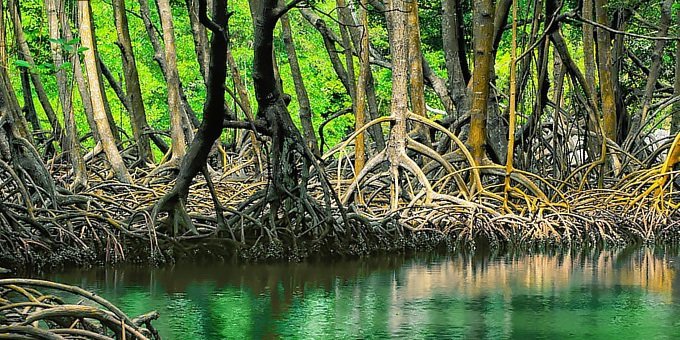
Why Mangroves Matter?
Briefly, mangroves are a vast filtering system ensconced along coastal waterways where freshwater from lakes, rivers, or streams meet salt water from seas, bays, and oceans. They comprise a complex biosystem anchored by several species of mangrove trees, all functioning to extract and desalinate the saltwater, and store freshwater in their leaves.
Mangroves are tidal forests, not swamps. They are cradles of life both above and below the surface. They provide sanctuary for millions of nesting birds, mammals, reptiles and amphibians, crustaceans and mollusks, and billions of insects. They make the water a habitable environment for plants and wildlife that otherwise could not survive the sea’s saltwater levels. Mangroves create fish hatcheries important to ocean and freshwater sustainability, and to sustenance and commerce of fishing activities.
Mangrove trees are remarkably strong. They grow in mud, sand, peat, and even coral. They anchor a myriad of dense tropical flora, forming a twisted, interlocking barrier of roots, trunks, and canopy that protect coastal areas from storms and hurricanes. They also prevent the upstream incursion of salt water that would otherwise damage flora and fauna miles upriver. And the lives upstream are both human and non-human alike.
Not only are mangroves relentlessly pounded by storms from the sea on the coastal side, but by raging torrents of water pouring down from the mountains above. That water is often filled with pesticides, waste, and other human pollutants from agriculture and development that run off into the streams and rivers. And if all that was not enough, mangroves are incredibly efficient at carbon sequestration. That is how mangroves in Costa Rica, and all over the tropics, play a role in mitigating climate change. Mangroves that can be restored and then regenerate are designated as blue carbon ecosystems, capable of absorbing and storing carbon dioxide 10 times more efficiently than a land forest. It is in our own best interest to keep them healthy.
Each mangrove is critical to its local and regional ecosystem, each essential in the protection of biodiversity as well as human endeavors. In Costa Rica, we’re in a race to recovery, to prevent their loss and the wider damage that results whenever a mangrove forest collapses.
Who’s Involved?
The Corcovado Foundation, a leading non-profit environmental organization based in Drake Bay on Costa Rica’s renown Osa Peninsula. The Foundation is deeply involved in protecting and preserving biodiversity in the region, which is home to Corcovado National Park. Staff and volunteers educate, advocate, and activate people and programs in support of restorative and regeneration projects around the Osa and around Costa Rica.
The Foundation was chosen by the National System of Conservation Areas (SINAC) to help with the mangrove projects, which are funded by The French Facility for Global Environment (FFEM), with matching funds from EPOMEX (Universidad Autonoma de Campeche) SINAC, and the Foundation.
The project, named Mangrove Restoration in Costa Rica and Benin, is fully aligned with other restorative projects that the Foundation is currently developing and that have huge impact on the biodiversity and sustainability.
María Marta Chavarría, a SINAC hero working on the Cuajiniquil mangrove, is one of the Costa Rica’s true champions. When the previous organization running the project rescinded on its contract, Maria Marta stepped in. Undeterred, she did everything in her power to fill the funding and manpower void, rallying friends and families to keep the project alive. The Corcovado Foundation stepped in to support the initiatives to build awareness, provide funding, and to help onsite as often as possible as the projects move forward.

The Challenges
Simple protection of the mangroves is not enough. Human incursion has damaged the systems to the point that if they are not first restored, they will be unable to regenerate on a scale that would have them resume their vital roles.
Terraba-Sierpe
Large-scale commercial rice farming, cattle farming, and palm oil plantations have compromised the balance in vast areas of this essential mangrove system. In addition to the water “redistribution” typical with rice farming, the changing environment has given root to Negra forra, an incredibly aggressive species that has thrown off the system’s equilibrium. The project focuses on eradication of Negra forra and replanting the mangroves damaged by its intrusion.
Pitahaya
This area is being severely damaged by human presence. Specifically, hundreds of squatters have been invading the mangrove. To survive, they are fishing and harvesting sustenance food from the mangrove and the rivers that feed it. They are cutting the trees for building and firewood.
There are no sanitation facilities or systems to cope with the garbage, waste, or escalated impact of a large human population in this fragile biosystem. So, they are contaminating the area. Not only is this damaging the mangrove, but also destroying the fish hatcheries and the food chain on which artisan fisherman and commercial operations depend, weakening the mangrove’s ability as a sea barrier, and driving wildlife out of the area.
Cuajiniquil
This mangrove needs restoration of its normal salt level. Ironically, mangrove trees are desalination factories, but here, human salt harvesting from a now-abandoned commercial operation is impeding the mangrove from growing back. Salt levels have overwhelmed the capacity of the mangrove to maintain its own equilibrium, thereby preventing the system to help the natural vegetation recover and repopulate. The project is an engineering undertaking where diversion canals are being created to reduce the salt level, so the mangrove can grow back.
In the weeks and months again, we’ll provide updates and images documenting the progress and impact of your support for these three mangrove restoration projects.

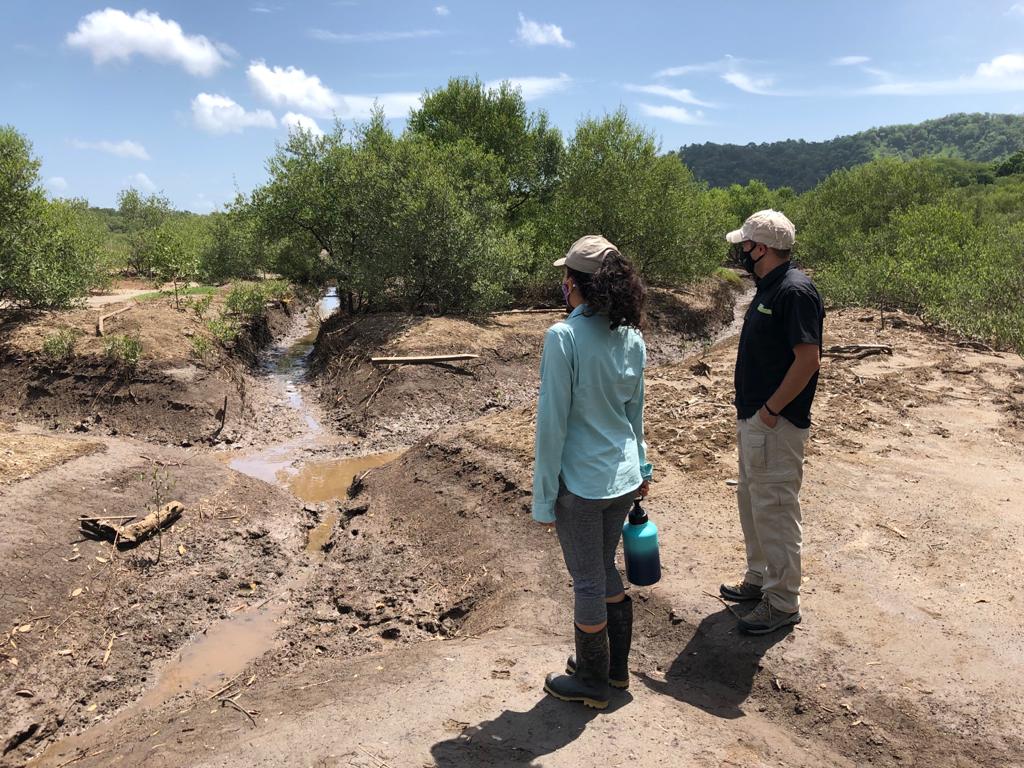
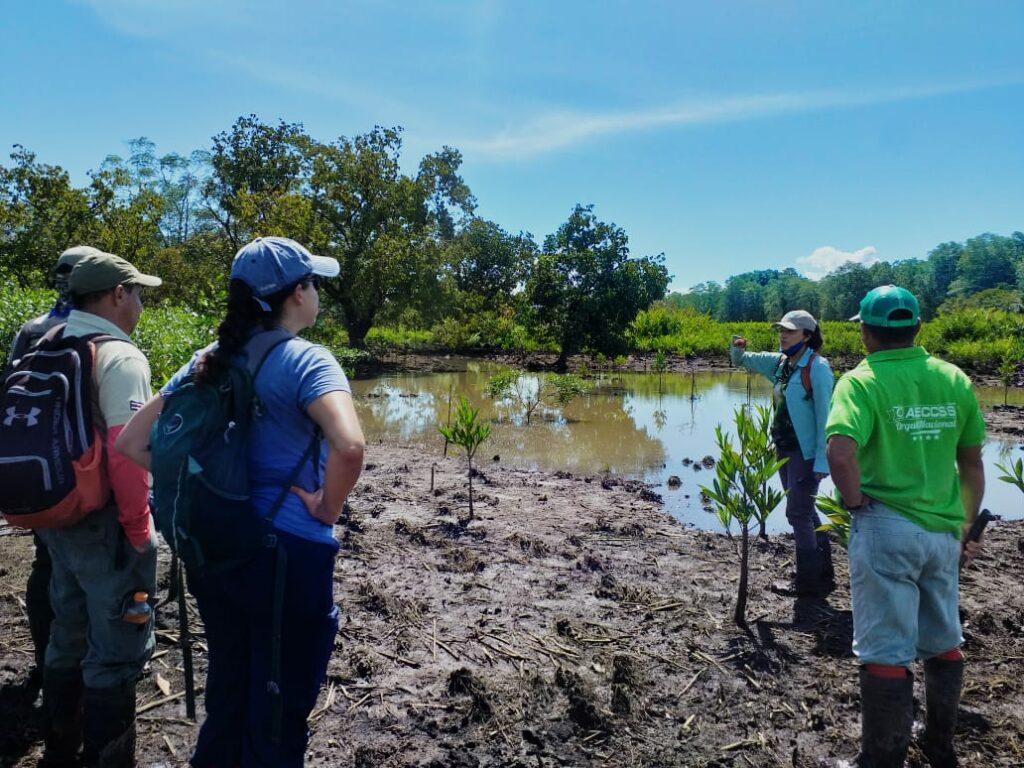
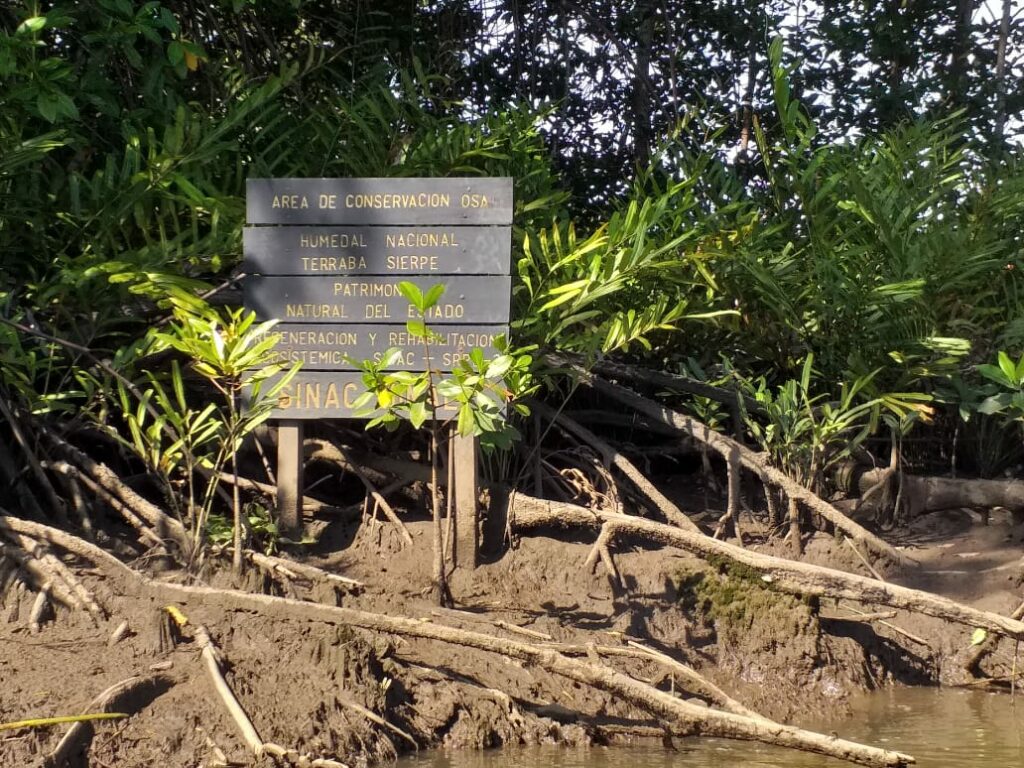

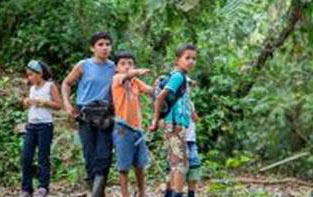
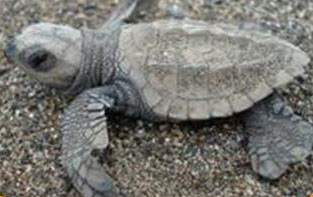
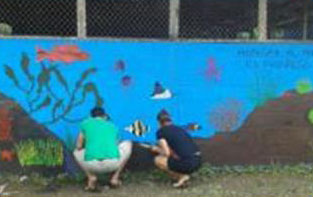



 2297-3013
2297-3013 info@corcovadofoundation.org
info@corcovadofoundation.org